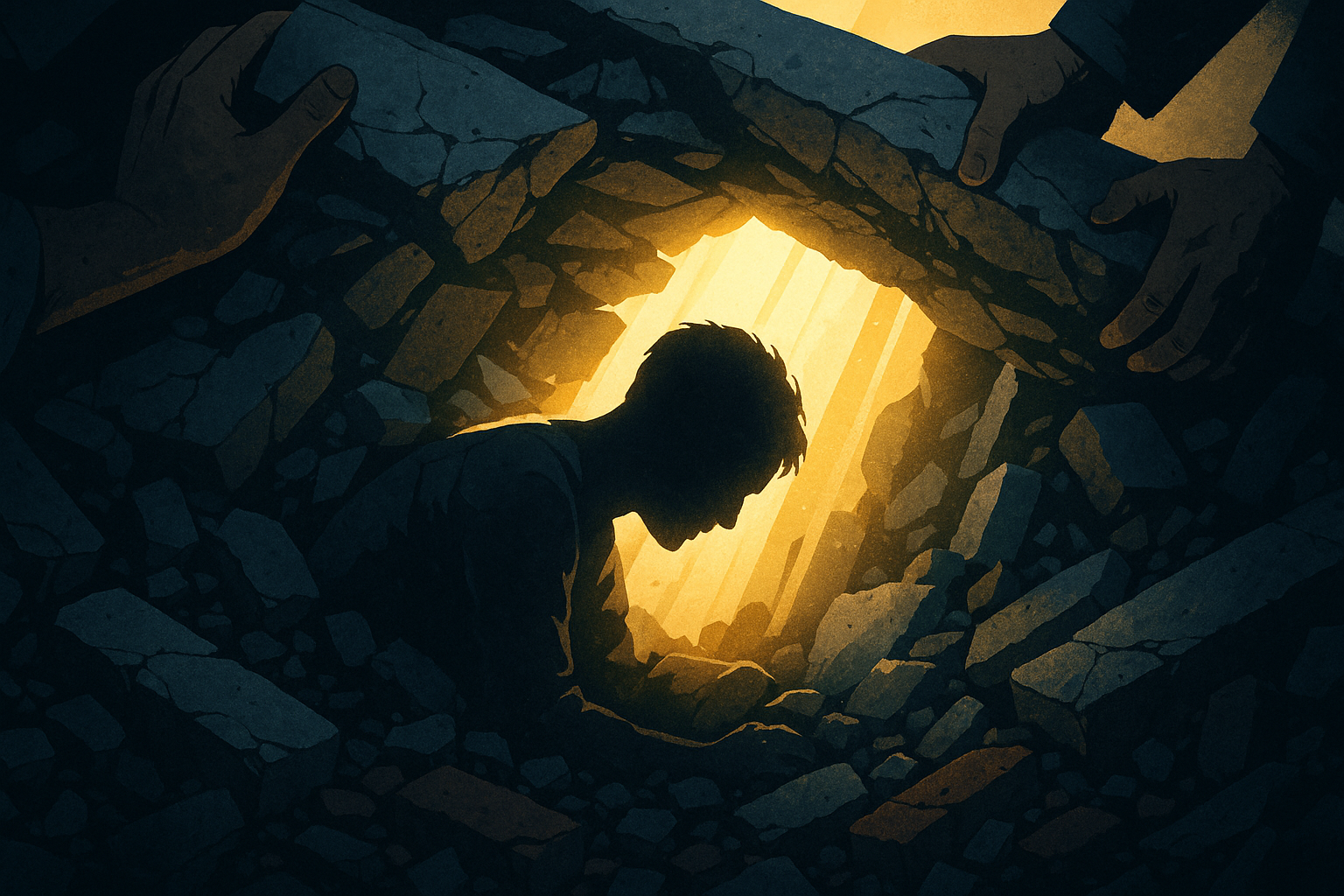Seeing Through the Damage: Why “Bad People” Aren’t What We Think
We’ve been told there are “bad people” in the world.
But here’s a truth worth holding onto:
“Bad people” are often just good people who, at some point, have been traumatised.
When we stop at the surface — judging behaviours, writing people off, keeping our distance — we miss the deeper story.
We forget that trauma reshapes people. It distorts expression, dulls joy, and replaces trust with survival strategies that can look hostile, cold, or destructive.
If we truly want to live in a safer, more connected world, we have to look through the damage to the soul beneath it.
Punishment Makes the Problem Worse
When someone’s behaviour makes us uncomfortable or even unsafe, the natural instinct is to push back.
But punishing trauma with more trauma doesn’t fix the problem — it fuels it.
Each act of rejection, judgement, or exclusion simply adds another layer of debris on top of the person’s already-buried self. And that debris compounds, until the good soul underneath is almost impossible to reach.
This isn’t just an individual loss — it’s a collective one. Every time we abandon a person to their pain, we lose a potential contributor to the world we’re trying to build.
Seeing the Soul Beneath the Symptoms
It’s not easy to accept someone who’s showing antisocial behaviour.
But here’s the thing: many have never once been seen in an atmosphere of true non-judgement. They’ve never been given permission to express who they really are without fear of consequence.
Imagine someone trapped under the rubble of an earthquake — the building collapsed long ago, but they’re still there. The shouting, the struggle, the sharp edges you see? They’re not the person — they’re the wreckage.
If we treat the wreckage as them, we lose the chance to free them.
If we instead send in the cranes and the rescue crews — if we take the time to lift away the concrete — we become heroes in their story. And in the process, we set them up to become heroes in ours.
Why It Matters for All of Us
When we leave people trapped under trauma, we don’t just leave them suffering — we create a constant echo of pain in our own lives.
The wailing of the wounded doesn’t fade; it gets louder.
We either have to drown it out with our own noise, or run further away from it.
Both rob us of peace.
And if they don’t make it — if the trauma wins — we’ll carry the knowledge that we could have acted, but didn’t. That knowledge won’t haunt us like a ghost; it will follow us as a principle-based consequence: we reap what we sow.
The Reward of Rescue
Restoring a life damaged by trauma isn’t just an act of charity — it’s an act of shared survival.
It plants seeds of greatness, love, and blessing in the soil of our shared humanity.
And it’s not as hard as it might seem. It starts with something deceptively simple:
Speak to the good soul you see beneath the chaos, not to the chaos itself.
From there, the work is about building infrastructure — real, physical pathways for healing, growth, and development. And alongside the structures, we must cultivate cultural layers that dissolve the toxic “us and them” divide. Because as long as we keep people separated into “safe” and “unsafe” categories, the trauma will feed itself.
Trust Is the First Step
This all begins with trust.
Trust that it’s possible for people to come back from the brink.
Trust that our collective wellbeing is worth the effort.
Trust that acting now prevents a much harder road later.
If we don’t trust, we won’t act.
If we don’t act, the cost will be far greater than we imagine.
But here’s the good news: we’ve already begun.
Every act of compassion, every time we’ve refused to judge someone by their worst moment, every bridge we’ve built instead of burned — it all counts.
So, congratulations.
Your courage is the antidote to the hopelessness this world tries to sell us.
Your dedication is the rescue team arriving at just the right moment.



